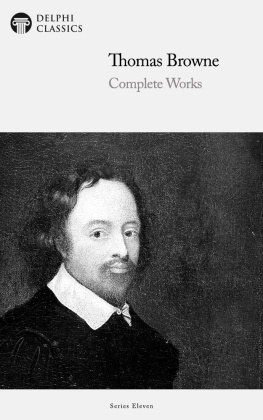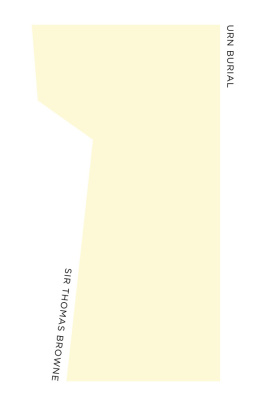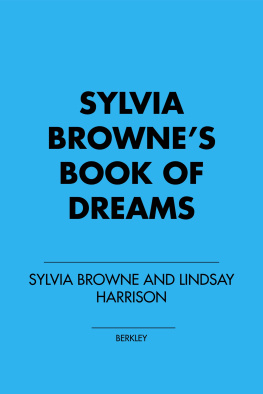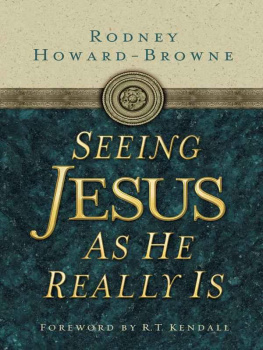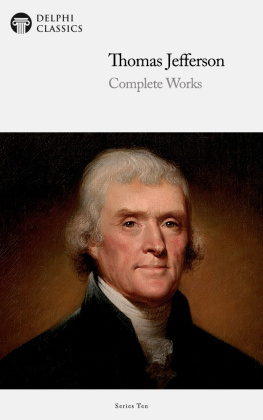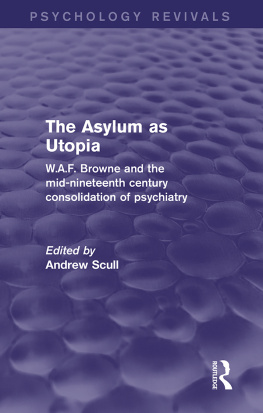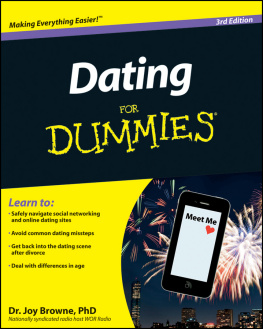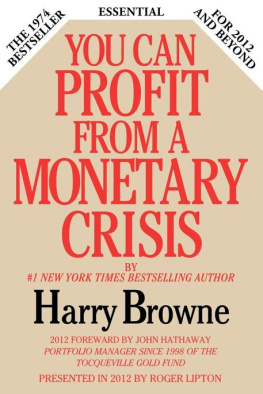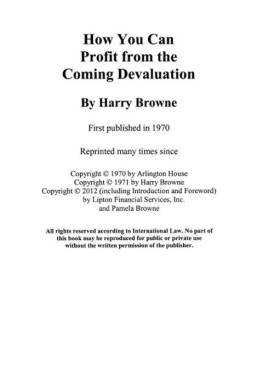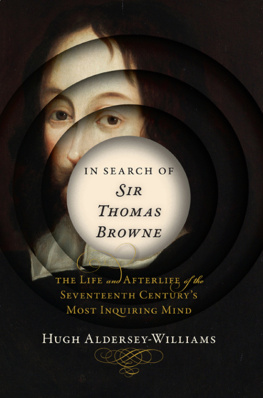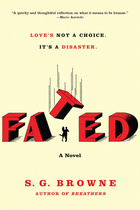
The Complete Works of
THOMAS BROWNE
(1605-1682)

Contents

Delphi Classics 2020
Version 1


Browse our Main Series

Browse our Ancient Classics

Browse our Poets

Browse our Art eBooks

Browse our Classical Music series

The Complete Works of
THOMAS BROWNE

By Delphi Classics, 2020
COPYRIGHT
Complete Works of Thomas Browne

First published in the United Kingdom in 2020 by Delphi Classics.
Delphi Classics, 2020.
All rights reserved. No part of this publication may be reproduced, stored in a retrieval system, or transmitted, in any form or by any means, without the prior permission in writing of the publisher, nor be otherwise circulated in any form other than that in which it is published.
ISBN: 978 1 91348 737 9
Delphi Classics
is an imprint of
Delphi Publishing Ltd
Hastings, East Sussex
United Kingdom
Contact: sales@delphiclassics.com

www.delphiclassics.com

Explore Philosophy at Delphi Classics

The Books

St Michael-le-Querne, Cheapside, in 1585 Brownes birthplace. The church was destroyed in the Great Fire of London of 1666.

A view of Cheapside in 1837

Cheapside today the street forms the historic and modern financial centre of London, with St. Pauls Cathedral to the west.

Pembroke College, Oxford in 1623, Browne went to Broadgates Hall of Oxford University. He was chosen to deliver the undergraduate oration when the hall was incorporated as Pembroke College in August 1624.
Religio Medici (1643)

1682 TEXT
Thomas Browne was born in the parish of St. Michael, Cheapside, in London on 19 October 1605. He was the son of Thomas Browne, a silk merchant from Upton, Cheshire, and Anne Browne, the daughter of Paul Garraway of Sussex. His father died while he was still young and his mother later married Sir Thomas Dutton (1575-1634). Initially, Browne attended school at Winchester College, before he went to Broadgates Hall of Oxford University. Such was his distinction as a student, that he was selected to deliver the undergraduate oration when the hall was incorporated as Pembroke College in August 1624. He graduated from Oxford in January 1627, after which he studied medicine at Padua and Montpellier universities, before completing his studies at Leiden, where he received a medical degree in 1633. He then settled in Norwich in 1637, practising medicine there until his death in 1682.
Brownes first literary work was Religio Medici (The Religion of a Physician), a journal principally concerning the mysteries of God, nature, and man, which he described as a private exercise directed to myself. It circulated at first only in manuscript among his close acquaintances and it surprised him when an unauthorised edition appeared in 1642, as the text included several unorthodox religious speculations. An authorised text followed in 1643, with some of the more controversial views removed. The expurgation did not end the controversy, when in 1645, Alexander Ross attacked Religio Medici in his Medicus Medicatus (The Doctor, Doctored) and, as happened with much Protestant literature of the time, the book was swiftly placed upon the Papal Index Librorum Prohibitorum . Nonetheless, it was an immediate success and was soon circulated widely in Europe in a Latin translation, while also being translated into Dutch and French.
The book serves as a spiritual testament and early psychological self portrait, which brought Browne great fame both at home and abroad. The treatise is structured upon the Christian virtues of Faith and Hope (Part 1) and Charity (Part 2), as Browne expresses his beliefs in the doctrine of sola fide , the existence of hell, the Last Judgment, the resurrection and other tenets of Christianity. Throughout the text, the author employs scientific imagery to illustrate religious truths as part of his discussion on the relationship of science to religion, a topic that has lost none of its relevance for the modern day reader.
Throughout the seventeenth century, Religio Medici spawned numerous imitative titles, including John Drydens great poem, Religio Laici , though none of these attempts achieved the open, intimate tone of the original in which Browne shares his thoughts, as well as the idiosyncrasies of his personality with his reader.

Frontispiece of the 1642 pirated edition of Religio Medici.
CONTENTS

Portrait of Thomas Browne attributed to Joan Carlile, completed close to the time of the publication of his first literary work. The painting is held today in Londons National Portrait Gallery.
Next page
